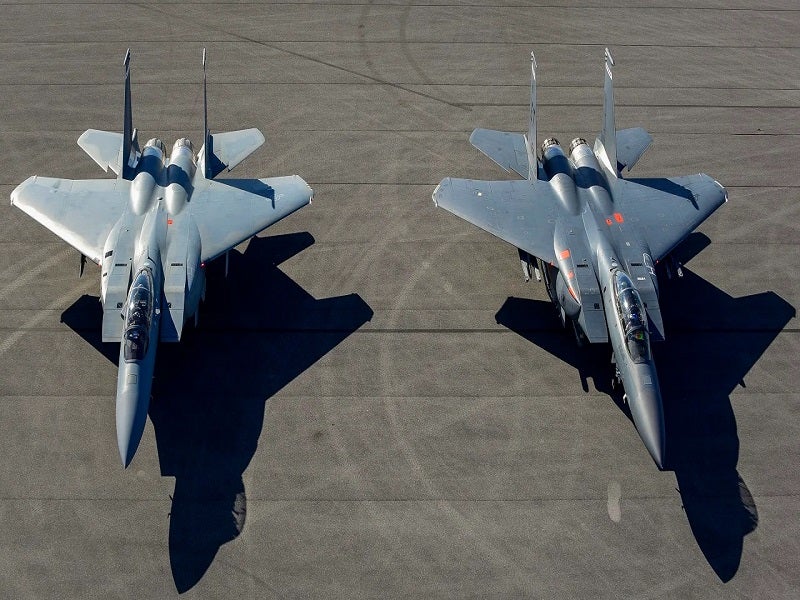The McDonnell Douglas F-15 Eagle is an iconic symbol of American air power and a benchmark in the evolution of modern fighter aircraft. Since its first flight in 1972, the F-15 has earned a stellar reputation for its unmatched air superiority, advanced technology, and exceptional performance. Designed as a dedicated air superiority fighter, the F-15 has become one of the most successful and versatile aircraft in the history of aviation.

Origins and Development
The F-15 Eagle was conceived during the height of the Cold War, a period when air superiority was paramount to ensuring national security. The United States Air Force sought a new fighter to counter the growing threat of advanced Soviet aircraft, such as the MiG-25 and MiG-31. The McDonnell Douglas company, known for its expertise in fighter aircraft, was awarded the contract to develop a high-performance fighter capable of maintaining air dominance.
The F-15 made its maiden flight on July 27, 1972, and entered service with the U.S. Air Force in 1976. Designed with a focus on agility, speed, and firepower, the F-15 was built to excel in both air-to-air and air-to-ground combat. Its development marked a significant leap forward in fighter technology, setting new standards for performance and capability.
Performance and Design
The F-15 is powered by two Pratt & Whitney F100-PW-100 afterburning turbofan engines, which give it a top speed of approximately Mach 2.5 (around 1,650 mph or 2,655 km/h). With a service ceiling of over 65,000 feet (20,000 meters) and a combat radius of about 2,400 miles (3,860 kilometers), the F-15 is capable of executing long-range missions and engaging threats at high altitudes.
One of the most notable features of the F-15 is its advanced fly-by-wire control system, which provides exceptional handling and maneuverability. The aircraft’s design incorporates a large wing area and sophisticated flight control systems, allowing it to perform high-G maneuvers and tight turns with ease. This agility is crucial in dogfighting scenarios, where quick reflexes and superior maneuverability can make the difference between victory and defeat.
Avionics and Weaponry
The F-15 is equipped with state-of-the-art avionics and radar systems that enhance its combat effectiveness. The AN/APG-63 radar, developed by Raytheon, is a powerful pulse-Doppler radar that can track multiple targets simultaneously and engage threats at long ranges. This radar system is complemented by advanced electronic warfare (EW) equipment that provides the F-15 with a significant advantage in detecting and countering enemy threats.
In terms of armament, the F-15 is equipped with a versatile array of weapons that can be tailored to different mission profiles. Its primary armament includes the M61A1 20mm rotary cannon, which provides a reliable and effective close-in combat capability. For air-to-air engagements, the F-15 can carry a variety of missiles, including the AIM-7 Sparrow and the AIM-120 AMRAAM. The AIM-7 Sparrow is a semi-active radar-guided missile, while the AIM-120 AMRAAM is an advanced, beyond-visual-range missile that offers superior range and accuracy.
The F-15 can also be configured for air-to-ground missions, with options to carry precision-guided munitions and other ordnance. This versatility allows the F-15 to adapt to a wide range of combat scenarios, from air superiority to ground attack.

Operational History
The F-15 has seen extensive service in various conflicts and military operations around the world. It made its combat debut during the 1979 Iranian Revolution, where F-15s played a key role in establishing air superiority. The aircraft’s most notable performance came during the Gulf War in 1991, where F-15s achieved an impressive air-to-air combat record, downing numerous enemy aircraft with no losses.
The F-15 has continued to serve in numerous conflicts, including the Iraq War, the Syrian Civil War, and various peacekeeping missions. Its reliability, performance, and adaptability have solidified its reputation as one of the most effective fighter aircraft ever built.
Legacy and Evolution
The success of the F-15 has led to the development of several variants and upgrades. The F-15E Strike Eagle, introduced in the late 1980s, is a multi-role variant that incorporates additional avionics and weaponry for ground attack missions. The F-15EX, the latest variant, features modernized systems and enhanced capabilities to meet the needs of contemporary combat scenarios.
The F-15’s legacy extends beyond its operational success. Its design and technology have influenced the development of subsequent fighter aircraft and continue to serve as a benchmark for performance and capability in the world of aviation.

Conclusion
The McDonnell Douglas F-15 Eagle remains a symbol of American air superiority and a testament to the achievements of modern aerospace engineering. With its exceptional performance, advanced technology, and proven combat record, the F-15 has set the standard for fighter aircraft and continues to be a vital asset to the U.S. Air Force and its allies. As it moves into the next phase of its operational life, the F-15’s legacy as a pioneering fighter jet will endure, inspiring future generations of aircraft and pilots.





